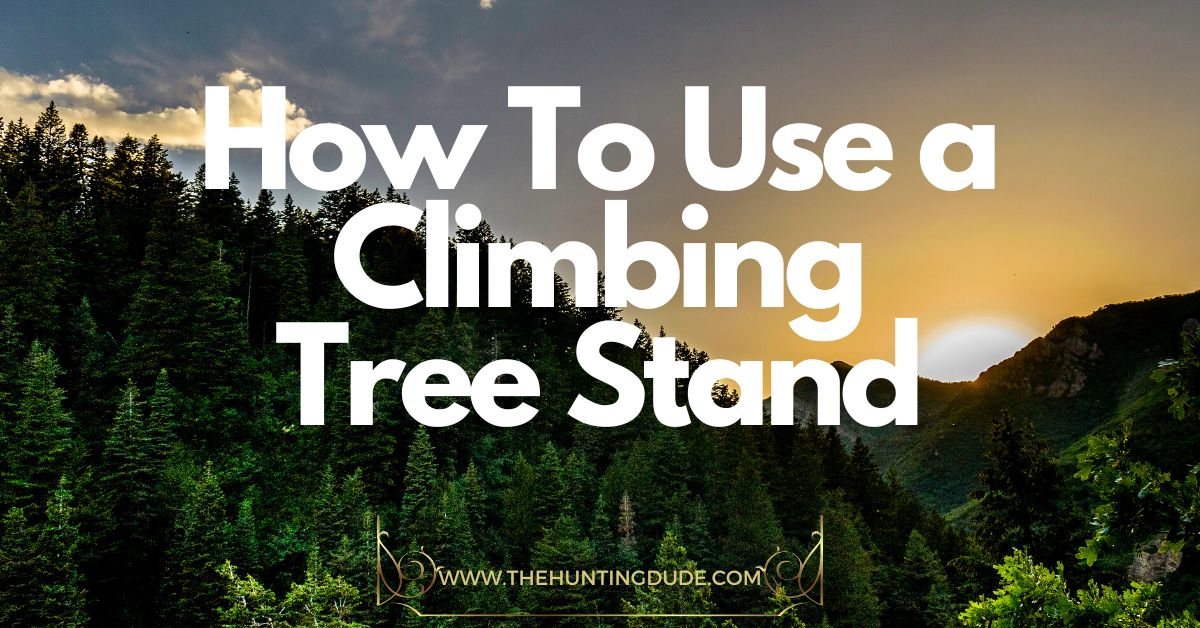A climbing tree stand is an extremely valuable part of the hunting gear. It not only provides hunters with a platform that helps hunters get a clear view of their hunt but also prevents them from getting detected by the prey.
However, these stands can prove to be very risky if you don’t know how to use a climbing tree stand properly. According to recent data, a large number of hunters have lost their lives in accidents involving climbing treestands in the past year.
Around 52% of hunters get hurt by falling down from the tree stands. Hence, in order to avoid such unfortunate happenings in the future, it is essential to use the climbing tree stand properly.
How To Use a Climbing Tree Stand?
The first and foremost step in properly using a climbing treestand is to ensure that you have picked out the right climbing treestand. For this purpose, you must first decide which area you will be hunting in as for different terrains, different models of climbing treestands are suitable.
For example, for more rugged terrains, heavier and sturdier models of climbing treestands are recommended, while for mountains, heavyweight climbing treestands can be quite a hindrance.
Thus, it is important to choose a climbing treestand according to your needs.
Choosing the Right Tree
The next step is to choose the most suitable tree to set up your climbing treestand. When choosing the tree for the climber tree stands, you should keep a few things in mind. Most trees have a thick base but get narrow towards the top.
It is crucial that you choose a sturdy and thick tree to bear the weight of the treestand as well as your weight. In addition, choose rough trees that produce little sap and avoid slippery trees such as beech trees.
Dead trees should also be avoided as they can break at any time and can cause severe injuries. Furthermore, for good visibility, it is essential to choose a tree with few small branches, or else big branches will hinder the smooth movement of your climbing treestand.
It is advised to take a pocket saw along with you while climbing a tree with a tree stand, so you can always trim the small branches that come your way. Pine and Oak trees are considered ideal for using a climbing tree stand.
How To Use a Climbing Tree Stand
After you have picked out the most suitable tree, you are required to set up your climbing treestand. For this purpose, take help from your treestand instruction manual.
In addition to this, you must ensure that your climbing treestand is placed at the correct angle and is leveled. Another thing that you must keep in mind is that the back of the climbing treestand should be facing the Sun.
This will prevent sunlight from getting into your eyes and will also reduce the chances of your target animals spotting you.
Taking Safety Measures
After choosing the right climbing stand, the most suitable tree, and setting up the climbing treestand, the only thing that is left is to climb the tree. However, before you get to the climbing part, there are certain safety measures that you must take.
These steps include making sure that no strap of your treestand is lost and that the top and bottom parts of the treestand are tightly attached together. This will prevent your treestand from collapsing. Furthermore, wear non-slippery and sturdy shoes.
In addition to this, if your treestand does not come with bungee rope or a lineman’s rope, it is recommended that you purchase them. These are crucial in helping you safely climb the tree. Also, always wear a safety harness when climbing.
Getting in the Right Position
Once you have taken all the safety measures, you must get into the correct climbing position. The safest position is to have your feet tightly secured to the bottom part of the climbing treestand.
This will prevent your feet from slipping and will thus, reduce the risk of you falling down the climbing treestand. Also, make sure that your entire body is attached to the tree. Never disconnect yourself from the tree when you are climbing.
Climbing Up the Tree
Once every safety precaution has been taken, and you have properly positioned yourself, wrap the rope or bungee cord around the tree and efficiently lock the treestand onto the tree.
Adjust the cables of your climbing stand according to the diameter of the tree you choose while making sure that the teeth of the treestand are strongly gripping the bark of the tree.
After making sure that everything is tightly locked, connect your harness and simply sit on the top of the stand while keeping your feet firmly placed on the bottom part.
Bring the bottom part of the treestand up by pulling it with your feet. Continue to slide up the treestand in this way until your desired height is reached.
Remember not to disconnect yourself from the tree unless your hunt is over and you are safely down on the ground.
Climbing Down the Tree
While climbing down the tree, all you have to do is slowly drop down the belt. It’s the same process as climbing up, just in reverse. While coming down, the ropes keep connected with the tree, which helps the tree stand to stay connected.
The most important thing to keep in mind is not to hurry things up. Patience is the key while climbing down because you don’t want to lose your balance and fall over.
Conclusion
Climbing treestand adds great convenience and comfort to the life of a hunter. However, it can result in terrible accidents if not used properly.
You can only experience the benefits of a climbing treestand if you follow the safety guidelines and use the treestand properly, following the correct procedure.
We have listed down the step-by-step guide on how to use the treestand, starting from choosing the most suitable tree to how to efficiently and safely climb the tree.
If you follow these steps with utmost care and precaution, your chances of suffering from unfortunate accidents will be reduced to a minimum.

